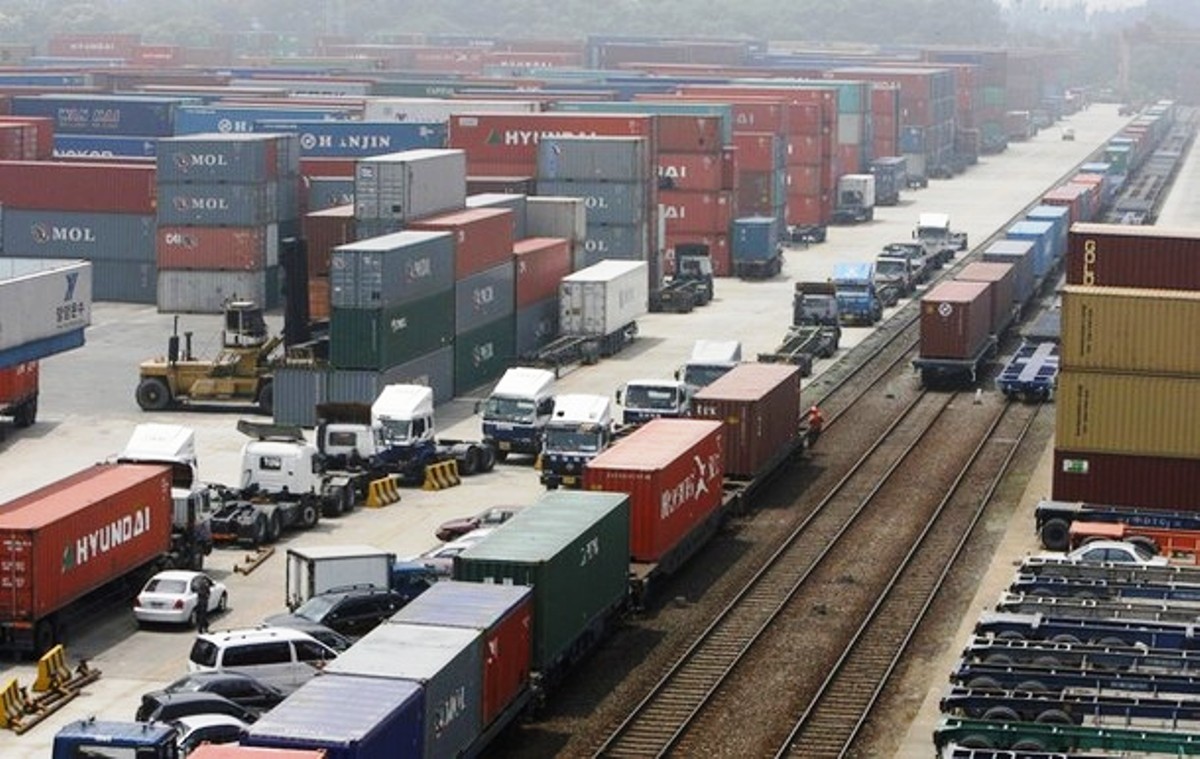by Zubair Lone
Recently, J&K state finance minister, in his budget speech for 2018-19, announced a dry port, each in Jammu and Kashmir regions. In this direction, highlights the budget speech, the state government already has an in-principle understanding with the government of Dubai and its logistics arm DP World. The three parties will get into a joint venture partnership to build a logistics hub, including an integrated dry port in the state.
What is a dry port?
A dry port also called an inland port or multimodal logistics centre, is an inland terminal directly connected to a seaport by rail or road. It is called so because it is very similar to a seaport in the services it offers, except that it is nowhere near a sea. It is usually located where networks of different transportation modes converge.

It serves as a transhipment point in the transport of export and import goods and consists of facilities like container yards, warehouses, railway sidings, cargo-handling equipment, and administrative services for export and import clearances. Shippers can leave and/or collect their standardized units as if directly at the seaport.
Dry ports in India
India, with one of the longest coastlines of over 7500 km, has 13 major and around 200 minor seaports. According to the Ministry of Shipping, Government of India, around 95 percent of India’s trading by volume and 70 percent by value is done through maritime transport. In such a scenario, a dry port is employed to relieve a seaport of some workload and congestion.
Of around 300 dry ports in India, about 40 percent are owned by Container Corporation of India (CONCOR) and Central Warehousing Corporation (CWC), and the remaining by the private sector. CONCOR’s Inland Container Depot, ICD, Tughlakabad is the largest ICD in India. Spread over 44 hectares of land in National Capital Region, it handles nearly a million containers annually.
However, out of the 300-odd dry ports in India, only 170 are functional. As a result, more recently, in the first week of January 2018, the Government of India has shared its plans to overhaul the dry ports to resolve infrastructural constraints faced by exporters and importers and to give a fillip to India’s foreign trade. The Government has set the ball rolling to assess the laws governing dry ports, their subsidies and funding patterns, and streamline them with other ports in accordance with global practices.
Drivers and Challenges
Among the current key drivers for the development of dry ports in India, Sagarmala and Bharatmala projects of Government of India top the list. Sagarmala is a US$130 billion investment initiative entailing port modernization plan, new port development and port-linked industrialization, being undertaken from 2015 to 2035. Bharatmala is another US$84 billion road and highways project that aims to build 83,677 km of committed highways and roads including economic corridors, coastal roads and port connectivity roads. Incorporation of custom clearing activities and higher margins in comparison with other logistics activities are the other drivers. At the same time, developing a dry port has historically involved insanely high costs and obsolete procedures for movement of cargo besides a plethora of clearances from various departments.
The long-drawn demand and the silver linings
The proposal of setting up an Inland Container Depot (ICD) or dry port in Kashmir was initiated in 2005. Despite the challenges, experts and business leaders have since been vouching for the development of dry ports given the high cost of logistics to businesses in the state. Apart from ensuring timely and uninterrupted supply to the state, it will also bring in reliability, thus improving the efficiency of supply chains, especially for horticulture produce from the state.

Choosing the right location along with sufficient expansion scope and proper connectivity are, however, crucial for such dry ports. Interestingly, looping in Dubai government’s world-class logistics arm DP World together with revived thrust on the development of similar projects by the central government through Sagarmala and Bharatmala are attractive silver linings in this story.














